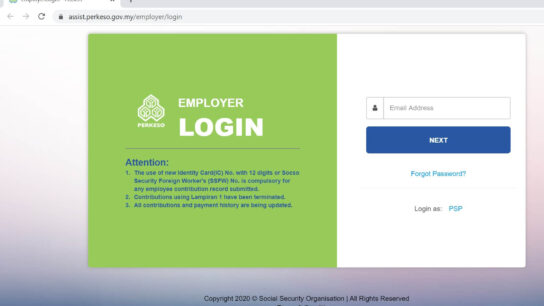In today’s digital landscape, Software Updates Durostech play a critical role in maintaining the security, performance, and overall user experience of applications and devices. Whether it’s a smartphone, laptop, or enterprise software, regular updates help to keep systems running smoothly and protected from potential cyber threats. Software updates include security patches, bug fixes, performance enhancements, and new features that improve the overall functionality of a program.
Durostech, a leading technology provider, ensures that its users receive timely and efficient software updates. These updates not only introduce new functionalities but also enhance compatibility, optimize performance, and safeguard users from cyber threats. By staying updated, users can maximize the potential of their software while minimizing risks associated with outdated versions. In this article, we will explore the importance of software updates, how Durostech manages its updates, and best practices for handling software updates effectively.
Understanding Software Updates

Software updates refer to improvements made to an existing software version to address bugs, security vulnerabilities, and performance inefficiencies. Updates can be classified into different categories based on their scope and purpose. Minor updates, also known as patches, fix specific issues, while major updates or upgrades introduce new features and significant performance improvements.
One of the most important distinctions to understand is between automatic and manual updates. Automatic updates ensure that software is always running on the latest version without user intervention, reducing the risk of outdated systems being exposed to cyber threats. On the other hand, manual updates give users more control, allowing them to install updates at their convenience. Regardless of the method, staying up to date with the latest software versions is essential to maintaining optimal performance and security.
Software vendors, including Durostech, release updates through various channels such as direct downloads, over-the-air (OTA) updates, or software management systems. Understanding these processes helps users make informed decisions regarding their updates, ensuring seamless integration with their existing systems.
The Importance of Software Updates for Durostech
Security Enhancements
One of the primary reasons for software updates is to enhance security. Cyber threats evolve continuously, and outdated software is often a target for hackers and malware attacks. Regular updates ensure that security vulnerabilities are patched, protecting user data from breaches and unauthorized access. Durostech prioritizes security updates to safeguard its customers, reinforcing its commitment to user safety and data protection.
Performance Improvements
Beyond security, software updates enhance system performance. Over time, users may experience slowdowns, crashes, or compatibility issues due to inefficiencies in older software versions. Updates optimize system resources, fix bugs, and improve overall stability, ensuring a smoother experience. Durostech’s software updates focus on delivering optimal performance, addressing reported issues, and enhancing responsiveness for a seamless user experience.
New Features and Functionalities
Technology is constantly evolving, and updates introduce new features that enhance user engagement. Whether it’s a revamped user interface, improved compatibility with third-party applications, or advanced functionalities, updates keep software in line with modern trends. Durostech regularly rolls out feature updates to ensure users can take advantage of the latest technological advancements without the need to switch to new software.
Regulatory and Compliance Requirements
Many industries have stringent regulatory requirements that necessitate software updates. Compliance with data protection laws, security standards, and industry regulations ensures that users remain legally compliant. Durostech ensures that its software updates align with legal and ethical guidelines, providing a reliable and compliant software environment for businesses and individuals alike.
How Durostech Manages Software Updates
Durostech follows a structured approach to managing software updates, ensuring efficiency and reliability. The update rollout process typically involves rigorous testing, beta releases, and final deployment.
The Update Rollout Process
Before an update is released, Durostech conducts thorough testing to identify potential issues. Beta versions are often made available to a limited group of users who provide feedback, helping refine the update before the final release. Once tested and approved, the update is deployed to all users through automated or manual installations.
Automatic vs. Manual Updates
Durostech provides both automatic and manual update options. Automatic updates are recommended for security patches and minor enhancements, ensuring users are protected against vulnerabilities without needing to take action. Manual updates, on the other hand, allow users to review changes before installation, particularly useful for enterprise users who need to maintain compatibility with existing software.
Common Challenges and Solutions
Some users may encounter issues with software updates, such as failed installations or system incompatibilities. Durostech offers rollback options and troubleshooting guides to assist users in case of update-related problems. By maintaining comprehensive support channels, Durostech ensures a smooth update process for all users.
Best Practices for Managing Software Updates
To maximize the benefits of software updates, users should follow these best practices:
Enable Automatic Updates
Wherever possible, enabling automatic updates ensures that security patches and critical fixes are applied immediately, reducing the risk of vulnerabilities.
Backup Important Data
Before installing major updates, users should back up their data to prevent potential data loss in case of unforeseen issues during the update process.
Monitor Update Logs and Changelogs
Reviewing update logs helps users understand the changes introduced in new updates. This information is particularly useful for businesses that need to assess compatibility before applying updates.
Troubleshoot Common Update Issues
If an update fails, restarting the device, checking internet connectivity, or reinstalling the update can often resolve issues. Durostech provides detailed troubleshooting steps to assist users.
Ensure Compatibility with Third-Party Software
Before applying updates, users should verify that essential third-party software is compatible with the latest version, preventing disruptions in workflow.
Conclusion
Software updates are essential for maintaining a secure, efficient, and feature-rich digital experience. By regularly updating software, users can safeguard their devices, optimize performance, and take advantage of the latest technological innovations. Durostech’s commitment to timely and effective updates ensures that users enjoy a seamless and secure computing experience.
Adopting a proactive approach to software updates minimizes risks associated with outdated systems and enhances productivity. By following best practices, users can ensure their systems remain up-to-date, secure, and functional, allowing them to maximize the potential of Durostech’s cutting-edge technology.






